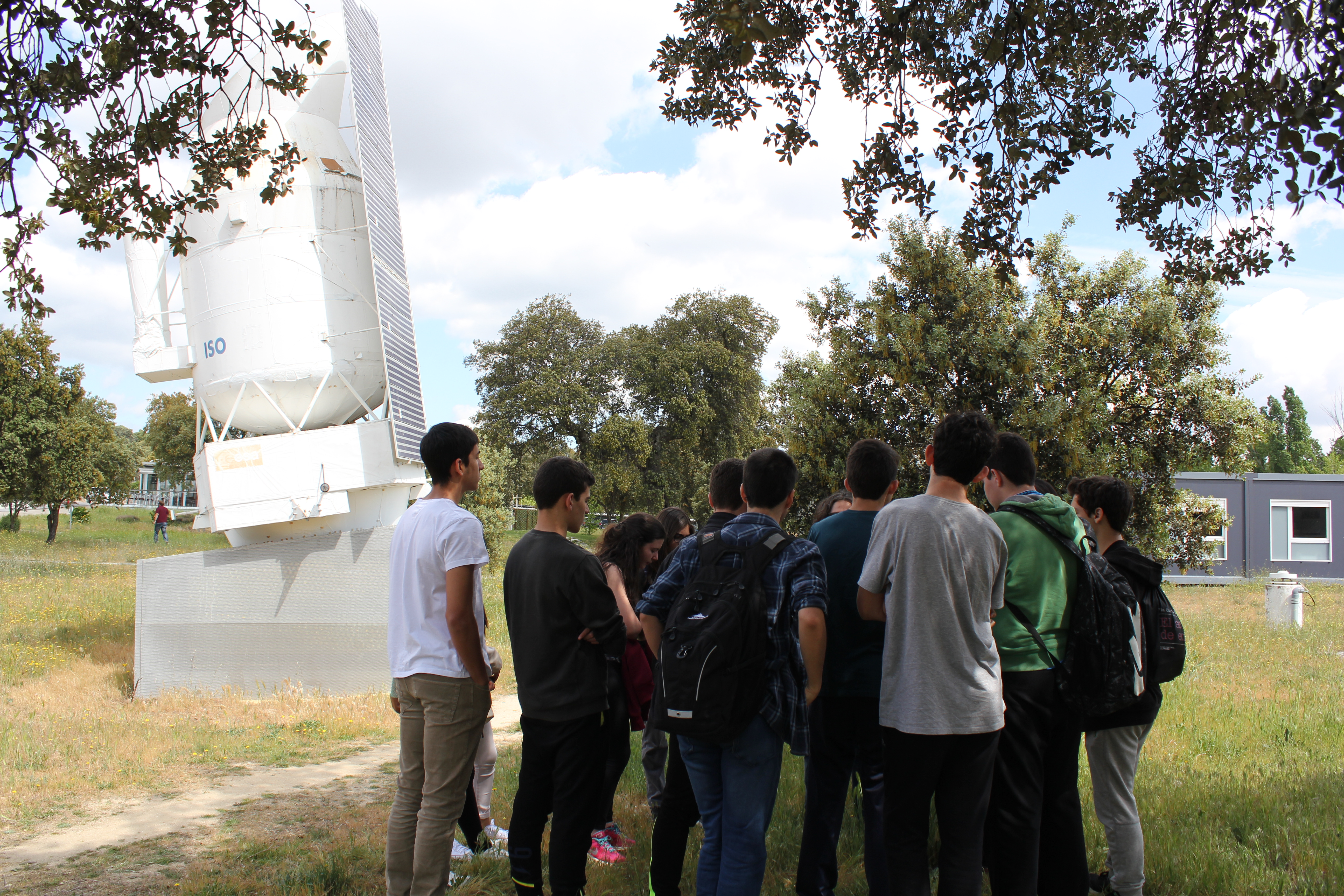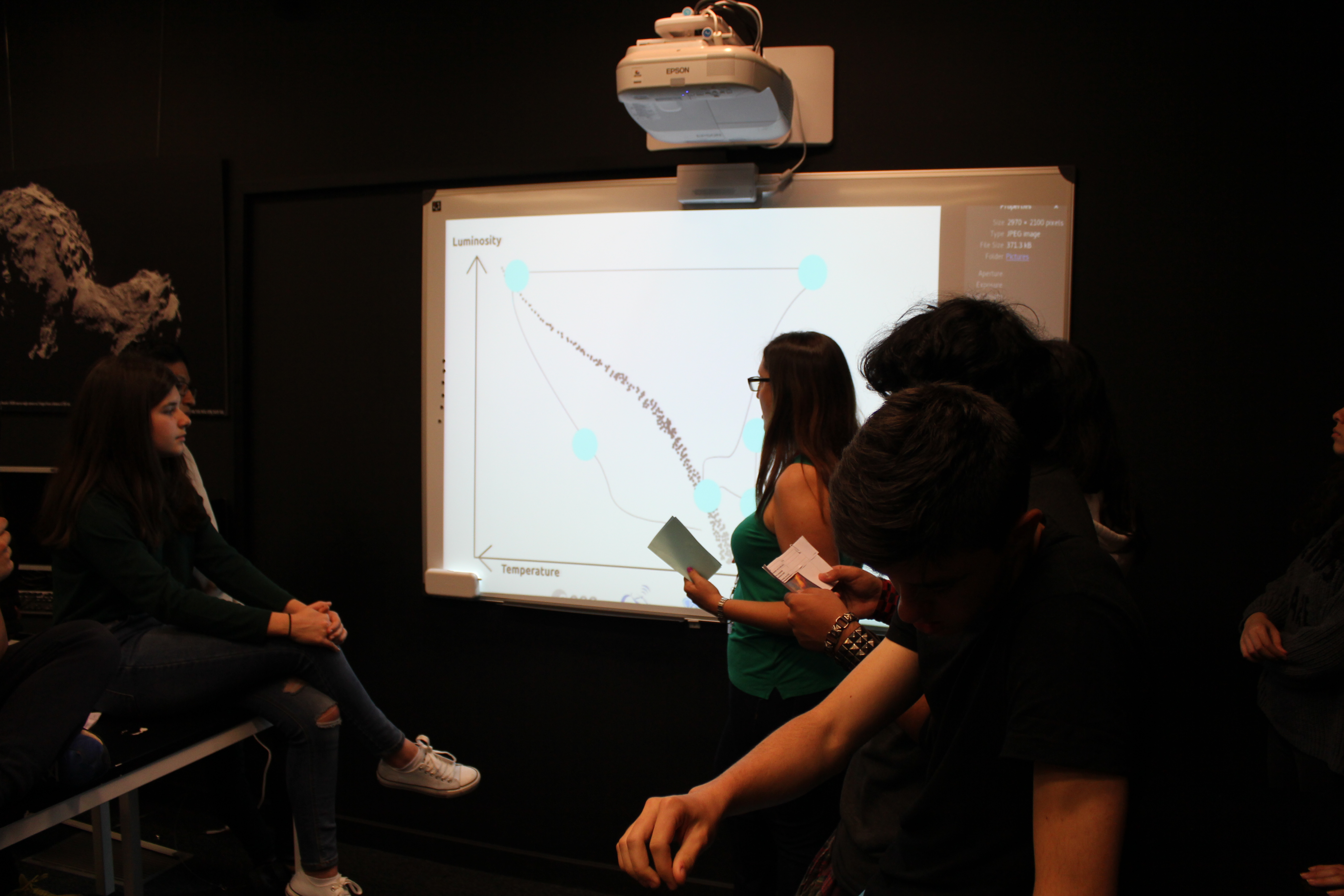Hertzsprung-Russell diagram - IES Francisco Giner de los Rios school
26/April/20174 ESO - 50 students
On 26th April, 50 students in their 4th year of ESO from the school IES Francisco Giner de los Rios came to ESAC to discover the different phases that a star pass through along its life. For this type the students were guided by the CESAR Team and used the diagram used for the astronomers to analyze star evolution phases, "the Hertzsprung-Russel diagram".
At the beginning, the CESAR Team answered to the main questions prepared by the students, such as "What is a black hole?", "What is the dark matter?", "If you found life in other planets, would you make it public?", "Why had been so many failures in Mars exploration?", "Is is planned to go again to the Moon?"

Just after the questions' time, the group was divided into two smaller groups. One of these groups made a tour around the scale models of some of the most relevant ESA space missions at the time that the CESAR Team explained to them quite interesting discoveries and key moments in those space missions.
The second group started a hands-on research session in which they analyzed the different phases of the evolution of the stars. For this they students were given a set of images with some characteristics of the region for them to allocate these in the Hertzsprung-Russell diagram.


Once each of the groups had finished their activities, the teams swapped roles.
It was an enjoyable morning when the students in the 4th year of ESO discovered a new fascinating career that deals with the study of the stars, "to be an astrophysics". The students were quite interested to know about the different careers that could allow them to work for ESA in the near future. The CESAR Team explained them all these details and motivated them to achieve them.
Most probably we will work together soon ;:o)